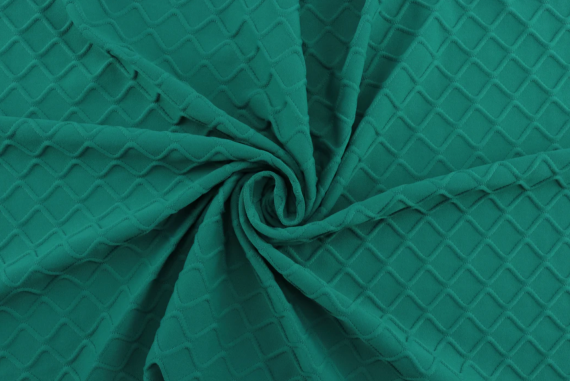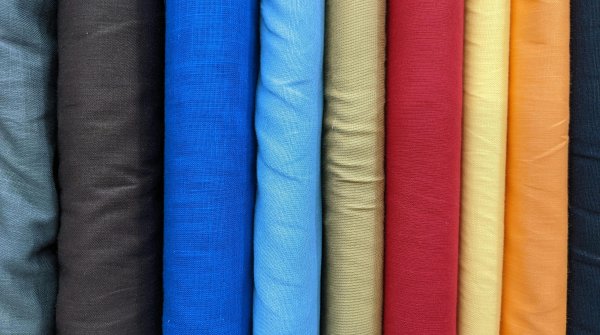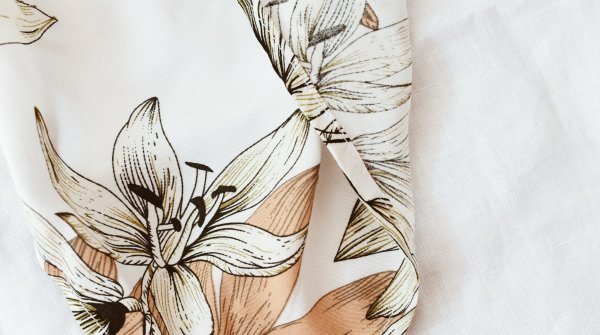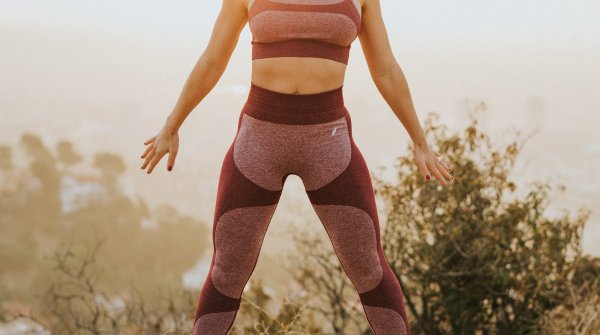As the name suggests, elastane is extremely stretchy. The main component of the synthetic fiber is polyurethane, a synthetic raw material that is as stretchy as rubber. This means that elastane can be stretched by up to 700 percent without wearing out: the fiber always returns to its original shape undamaged. A remarkable stretching exercise that makes elastane the perfect material for perfectly fitting sportswear that can withstand all movements without damage.
The smooth, rubber-like texture ensures that elastane fabrics are extremely hard-wearing and do not crease. They also do not fluff and do not form unsightly pills - a wear and tear process known as "pilling".

After the rubber comparison, this property of the synthetic fiber is all the more astonishing. The smooth elastane fibers absorb very little moisture and dry quickly. As a result, spandex clothing never feels uncomfortably wet. However, there is one disadvantage: synthetic fibers develop unpleasant odors more quickly than natural fibers. However, there are already innovative coatings that prevent perspiration odors.
Synthetic fibers do not feel as pleasant on the skin as natural fibers. This is why elastane is only ever added to fabrics in order to produce precisely fitting and elastic fabrics and is not used exclusively for fabric production. The proportion is usually less than 30 percent and gives cotton fabrics, for example, stretch properties. A good example is stretch jeans, socks or yoga pants. However, elastane not only works well when mixed with sustainable natural fibers, but is also often found in super-stretchy blended fabrics with other synthetic fibers, for example for wetsuits, swimwear or cycling clothing.

The sporty fiber is created in the chemical laboratory on a synthetic basis. According to EU textile labeling regulations, it must consist of at least 85% polyurethane, a material that is obtained from the non-renewable raw materials crude oil and natural gas. Enormous amounts of energy are required for production and the resulting intermediate products are problematic for the environment.
While there are already environmentally friendly recycling processes for regenerative natural fibers such as cotton, merino wool and linen, it has not yet been possible to develop a mature process for recycling synthetic materials such as spandex. Another problem is that microparticles from synthetic fibers are released into the environment as microplastics when textiles wear out.
A large part of the wear and tear occurs in the washing machine: microparticles are released from the elastane fabric during the wash cycle and end up in the waste water. They are so small that they are not even filtered out in the sewage treatment plant. As a result, they end up directly in rivers, lakes and oceans and ultimately also in fish, mussels and aquatic plants. To reduce this environmental pollution, you should definitely wash your sportswear containing elastane in special laundry bags that collect the microplastics.
Spandex has a number of advantages, including good breathability and high durability. However, if you want to use sustainable fabrics, spandex is only a good choice to a limited extent.
Below we answer frequently asked questions about spandex.
What is spandex?
Elastane is a chemical fibre that is characterized by its high elasticity and high stretchability. The rubber-like chemical fiber is also known as "spandex".
What are the disadvantages of elastane?
Too much elastane in clothing means that it is no longer breathable and sticks to the body. There is therefore a lack of comfort and you start to sweat more quickly. Another disadvantage is the ecological footprint, as elastane is obtained from non-renewable materials such as crude oil and natural gas.
Is spandex sustainable?
Although elastane as a synthetic fiber is a vegan alternative for sportswear, the fabric is not entirely harmless to the environment. According to EU regulations, elastane must consist of at least 85% polyurethane, which is obtained from non-renewable raw materials such as crude oil and natural gas.
What is the difference between elastane and spandex?
Elastane and spandex are two terms for the same material. While "spandex" is mainly used in the USA, "elastane" is the common term in Europe. Both refer to a highly stretchable fiber that is often used in sportswear and tight clothing. So when you ask "What is spandex?" or "Elastane vs. spandex?" - it's the same material.
 ISPO TextrendsISPO Textrends Whitepaper 2027/28
ISPO TextrendsISPO Textrends Whitepaper 2027/28
- ISPO awards
- Mountain sports
- Bike
- Design
- Retail
- Fitness
- Health
- ISPO Job Market
- ISPO Munich
- ISPO Shanghai
- Running
- Brands
- Sustainability
- Olympia
- OutDoor
- Promotion
- Sports Business
- ISPO Textrends
- Triathlon
- Water sports
- Winter sports
- eSports
- SportsTech
- OutDoor by ISPO
- Heroes
- Transformation
- Sport Fashion
- Urban Culture
- Challenges of a CEO
- Trade fairs
- Sports
- Find the Balance
- Product reviews
- Newsletter Exclusive Area
- Magazine




